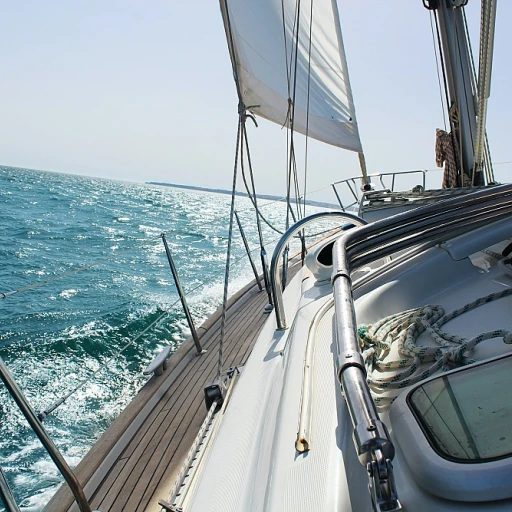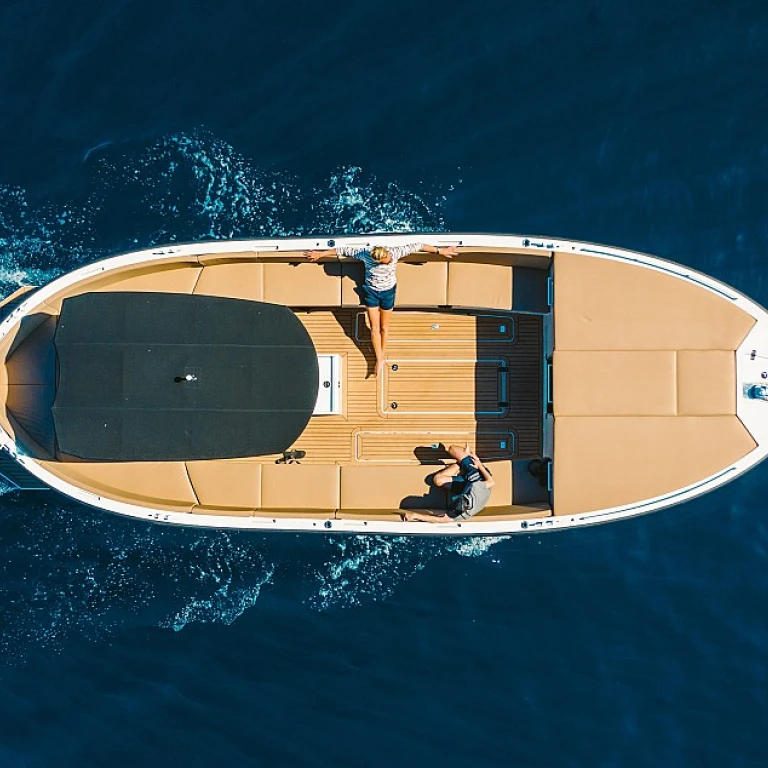The Role of Type 2 Life Jackets in Yachting Safety
Vital for Boating Safety
Navigating the open waters comes with its set of challenges and potential hazards, making the presence of adequate safety equipment paramount. Among the plethora of safety gear, Type 2 life jackets stand out as an indispensable protective measure, especially within the yachting community.
Type 2 life jacket offers significant buoyancy, typically around 15.5 lbs, ensuring that wearers are kept afloat even in rough waters. This characteristic is essential for both adult and child passengers, maximizing their chances of staying above water until help arrives. Their ability to turn unconscious wearers face-up is an additional safety feature not available in some other approved types of personal flotation devices (PFDs), such as Type III jackets.
While out yachting, the presence of an approved life vest not only bolsters confidence but becomes a vital tool in unexpected circumstances, such as turbulent water conditions or sudden weather changes. The market offers a variety of these jackets at varying price points, ensuring that securing these essential must-haves doesn't necessarily come with a hefty unit price. The value of enhancing safety cannot be overstated, especially when considering
securing your investment in other safety aspects around the yacht, like outboard motor locks.
Lifelong enthusiasts and newer aficionados alike should remember the pivotal role Type 2 life jackets play in yachting safety. With features including kwik dry fabrics and inflatable PFDs, these elements promise not only comfort but also reliability when it matters most, turning potential tragedy into a tale of preparedness and vigilance.
Regulatory Compliance and Type 2 Life Jackets
Ensuring Safety Compliance on the Waters
Understanding the importance of regulatory compliance when it comes to Type 2 life jackets is crucial for safety in yachting. These life jackets are designed to provide a minimum buoyancy and are often used for inland water applications, where rescue is generally expected to arrive quickly. Life jackets must be USCG approved, ensuring they meet specific safety standards set by the United States Coast Guard.
Regulations specify that all boats must carry at least one USCG approved Type 2 life jacket for each person on board. This includes both adults and children, as different life jackets cater to different age groups, ensuring proper fit and maximum safety. In many instances, Type 2 inflatable PFDs are preferred due to their affordability and ease of use, often priced at a regular price range that is accessible for most yacht owners.
The buoyancy provided by Type 2 life jackets is crucial, as they are designed to turn unconscious wearers face-up in the water, offering significant protection for both conscious and unconscious individuals. Adult Type 2 life jackets typically offer a minimum buoyancy of 15.5 lbs, while those designed for children provide appropriately adjusted buoyancy levels to keep them safe.
Selecting the right life jacket vest means considering both the type classification and the specific requirements for the waters you will navigate. Read more about the detailed use of
360-degree red navigation lights to enhance understanding of regulatory compliance beyond life jackets, ensuring all aspects of yachting are covered comprehensively.
By adhering to these regulations, yacht owners can not only ensure the safety of everyone onboard but also avoid potential fines and penalties for non-compliance. Prioritizing safety with the right equipment is essential for peace of mind on the waters.
Choosing the Right Type 2 Life Jacket for Your Yacht
Finding the Perfect Fit for Your Yacht Adventure
Choosing the appropriate Type 2 life jacket for your yacht involves more than just picking one off the shelf. It's crucial to consider various factors to ensure that the life vest meets your safety needs and enhances your boating experience.
- Fit and Size: Proper fit is essential for the effectiveness of a life jacket. For both adults and children, ensure the jacket is snug yet comfortable, allowing for easy movement. Adjustable straps can help in achieving a better fit, which is particularly important for children to prevent the jacket from slipping off in the water.
- Buoyancy Requirement: Typically, a Type 2 PFD provides a minimum buoyancy of 15.5 lbs, which is usually sufficient for most inland water activities. This feature is vital for keeping an unconscious person face-up in calm water, making it a critical safety aspect.
- Material and Comfort: Consider jackets made from durable materials with comfortable linings like Kwik-Dry fabric that minimizes chafing and promotes quick drying. A comfortable life vest ensures it's worn consistently while on the water.
- Features: Some Type 2 life jackets come with additional features like reflective strips or whistle attachments for better visibility and signal in case of an emergency.
- Inflatable Options: Opting for inflatable PFDs can provide additional comfort and flexibility, although they might require more maintenance and checking for USCG approval.
- Price Considerations: The unit price of these life jackets can vary based on features and brand reputation. It's essential to balance between cost, safety aspects, and the specific needs for your yachting activities.
Incorporating these considerations will help you make an informed decision, ensuring that your Type 2 life jacket is not just a requirement but a reliable partner in enhancing your safety on the water. For insightful choices concerning other important yacht gears, explore the
power of Mercury’s 6 HP outboard.
Maintenance and Care for Type 2 Life Jackets
Ensuring Longevity and Performance
Proper maintenance and care are essential to ensure your Type 2 life jackets remain effective and reliable. Whether you're an avid water sports enthusiast or a casual boater, upkeep of these life-saving devices is crucial. Here are some important tips to consider:
- Regular Inspection: Routinely check your life jackets for any signs of wear or damage. Look for tears, broken straps, or faulty zippers. Ensure the Kwik Dry material is intact and free of mold.
- Proper Storage: Store your life jackets in a cool, dry place. Avoid exposing them to direct sunlight for extended periods, as UV rays can deteriorate the fabric and reduce buoyancy.
- Cleaning Routine: After each outing, rinse your jackets with fresh water to remove salt, sand, or dirt. Avoid using harsh chemicals as they can harm the material. A mild detergent can be used occasionally for a deeper clean.
- Inflatable PFDs: If using inflatable models, regularly test the inflation mechanism to ensure it's functioning correctly. Replace CO2 cartridges as recommended by the manufacturer.
- USCG and Brand Guidelines: Follow the maintenance guidelines provided by the United States Coast Guard (USCG) and the manufacturer. This ensures your Type 2 life jackets retain their approved status and functionality.
- Annual Tests: Perform buoyancy tests occasionally to confirm your jackets still meet the required 15.5 lbs of flotation for adults and the minimum buoyancy for child life jackets.
Taking the time to maintain your life jackets not only extends their lifespan but also ensures they perform flawlessly when called upon. When every minute on the water matters, a well-maintained PFD could be the difference between life and death.
Innovations in Type 2 Life Jacket Design
Exploring Modern Features in Life Jacket Design
The world of Type 2 life jackets is not standing still; new innovations offer yacht enthusiasts enhanced safety and usability. Among these advancements, inflatable PFDs stand out for their compact style and efficient deployment, providing an alternative to traditional buoyant vests. These units are typically lighter and less cumbersome, ensuring comfort without compromising the necessary USCG-approved safety standards.
Recent designs also incorporate kwik dry materials, which ensure the jacket dries quickly after exposure to water. This innovation not only enhances user comfort but also contributes to the jacket's longevity, maintaining its flotation capacity and overall performance.
While adult sizes are prevalent in the market, attention to children's safety remains crucial. Many modern jackets now come with features like head and neck support that can effectively turn unconscious individuals face-up in the water, a critical safety feature for both child and adult users alike.
Type II life jackets are consistently being refined to align with sustainability goals without escalating the regular price beyond reach. The use of eco-friendly materials in manufacturing is becoming commonplace, balancing the need for safety and environmental consideration.
From an economic standpoint, the unit price of these innovative jackets is competitive, making improvements accessible for many boating enthusiasts. While flotation and buoyancy are metrics that remain constant—usually around 15.5 lbs for adult models—the integration of stylish design features and ergonomic fits into the jacket vest is increasingly appreciated by yacht lovers.
In conclusion, while the key function of these USCG-approved jackets remains rooted in ensuring safety on the water, the infusion of style, comfort, and technology helps elevate the yachting experience. Innovations in material and design offer both practical benefits and peace of mind, making them an essential part of any safe yachting expedition.
Real-Life Scenarios: Type 2 Life Jackets in Action
Real-Life Applications Demonstrating the Effectiveness of Life Jackets
In the world of yachting, safety on the water should always take precedence. Utilizing Type 2 life jackets is not just about adhering to regulations; it's about ensuring the safety and well-being of all aboard. These jackets are particularly designed to turn most unconscious wearers face up in water, a crucial feature when the unexpected happens on the high seas.
Imagine a scenario during a leisurely boating excursion where a sudden gust of wind capsizes a vessel. In such a situation, the Type 2 life jackets come into their own. These units, offering a minimum buoyancy that keeps adults, children, and even infants afloat, play a critical role in saving lives. They are USCG approved, meeting standards that ensure their reliability and performance when it counts the most.
Type 2 life jackets are also pivotal in more recreational settings, such as water sports, where accidental falls into the water are not uncommon. Approved types, whether jackets or vests, provide an essential line of defense, maintaining buoyancy in unpredictable environments. By wearing these units, boaters of all ages can enjoy their time on the water with an added sense of security.
In another instance, consider a family enjoying a day out at sea. Inadvertently, a young child may find themselves overboard. A guard-approved life vest is designed to offer sufficient flotation and buoyancy, keeping the child floating safely until help arrives, proving the critical importance of choosing the right unit for the size and weight of the wearer.
Finally, as you invest in your vessel’s equipment and ensure regulatory compliance, remember to also prioritize the regular maintenance of these safety flotation devices. Over time, exposure to water and sunlight can take a toll on the fabric and inflatable materials of child and adult life jackets alike, impacting their performance. Thus, it is not just about selecting the right type of life jacket; it’s about ongoing care and attention to detail that enhances their lifespan and reliability on the water.
In reality, the price of safety is invaluable, especially when it comes to the duty of care every yacht owner holds towards their passengers. Investing in a quality life jacket can be the difference in critical moments out at sea.

